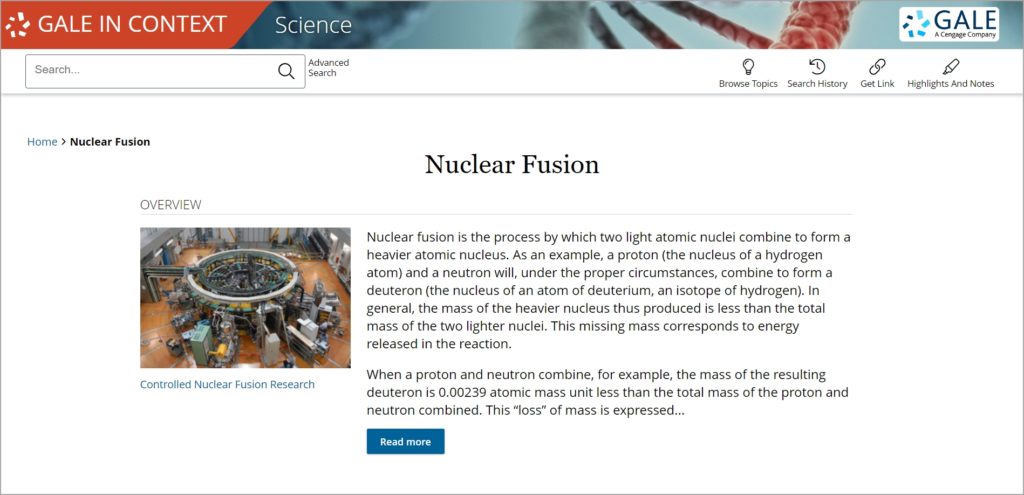| By K. Lee Lerner |
In December 2022, scientists working at the National Ignition Facility (NIF) at the Lawrence Livermore National Lab (LLNL) reported the first net gain in energy from a controlled fusion reaction (i.e., more energy was released than put into the reaction). The fusion ignition was also self-sustaining, and the experiment was widely hailed as a major scientific breakthrough.
Nuclear fusion is the process by which two light atomic nuclei combine to form one heavier atomic nucleus. Nuclear fusion is the initial driving process of nucleosynthesis, which takes place in stars and is the source of the electromagnetic radiation emanating from stars.
The fusion reaction at NIF was obtained by compressing and heating targets filled with thermonuclear fuel in a process known as inertial confinement fusion (ICF). In the NIF experiment, 192 lasers targeted a gold canister containing a 0.04-inch (1 mm) pellet of fuel composed of the deuterium and tritium isotopes of hydrogen. When photons from the laser struck the gold canister, they produced X-ray emissions that compressed the pellets to a density 20 times greater than lead, while simultaneously heating the pellets to about 5 million degrees Fahrenheit (3 million degrees Celsius), a temperature about 100 times hotter than the surface of the Sun. At this high density and extreme temperature, the atoms of deuterium and tritium began to fuse. In a blinding reaction that took just a few billionths of a second, both the pellet and surrounding canister vaporized. While the NIF lasers delivered about 2 million joules of energy to start the reaction, scientists determined that the reaction produced 3 million joules of heat energy. The net production of 1.5 times the energy input shattered the previous record of 0.7 times the energy input (i.e., an output of just 70 percent of the energy input).

Although energy is a function of state and not a substance, we can treat it as a substance for purposes of discussion. Energy is nether created nor destroyed, but it can be converted from one form (or state) to another. Fusion converts the potential energy in mass into other forms, including light and infrared spectrum light measured as heat according to Einstein’s equation E = mc2, where “E” stands for energy measured in joules (J); “m” stands for mass in kilograms; and “c” stands for the speed of light, measured in meters per second. Because the speed of light is so great (in International System of Units, or SI units, approximately 300,000 km/s), it takes only a small amount of mass to release tremendous amounts of energy.
While the fusion reaction at NIF produced more energy than used to directly induce fusion, it took approximately an additional 300 million more joules of energy to fire the lasers. The discovery remains highly significant, however, because it produced self-heating plasma that could reduce the need of the lasers to continue the reaction.
Many more scientific and technical advances will be needed before fusion reactions can be commercially viable. However, along with current nuclear and renewable energy sources, fusion could be the ultimate solution to satisfying the future world’s energy needs. Fuels for fusion are abundant, or easily made, and heat of fusion could power generators without the carbon pollution of fossil fuels or the perils of operating radioactive, waste-producing nuclear fission reactors.
About the Author
K. Lee Lerner is a writer, editor, and aviator who, along with Brenda Wilmoth Lerner, is the editor of the Gale Encyclopedia of Espionage, Intelligence, and Security; Climate Change: In Context; and many other award-winning books and articles on science, technology, and a range of global issues. A full bio and list of his work may be found at https://scholar.harvard.edu/kleelerner and https://harvard.academia.edu/KLeeLerner/.

